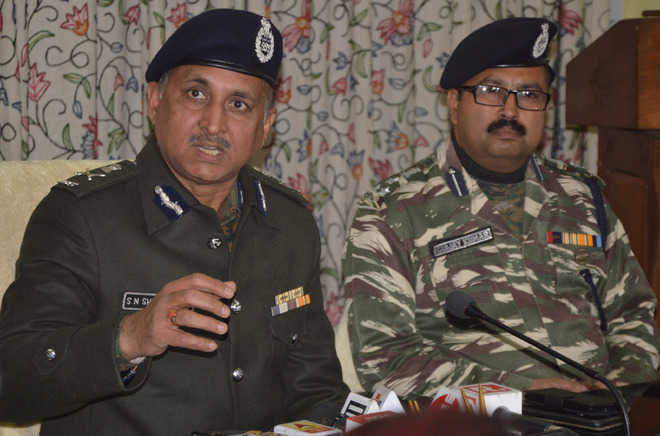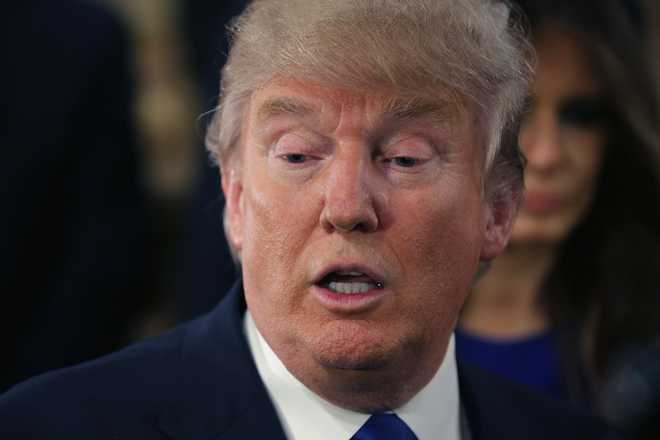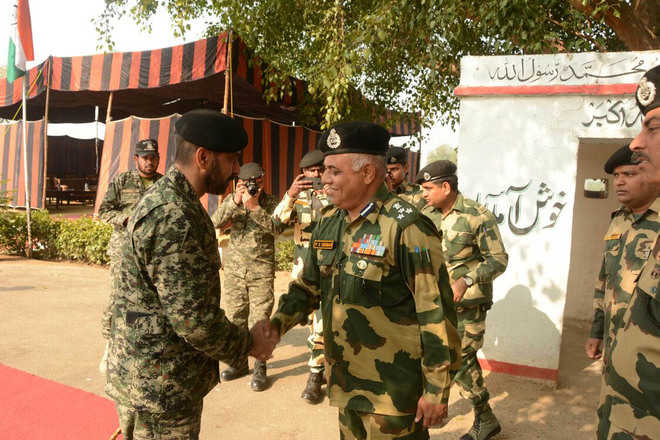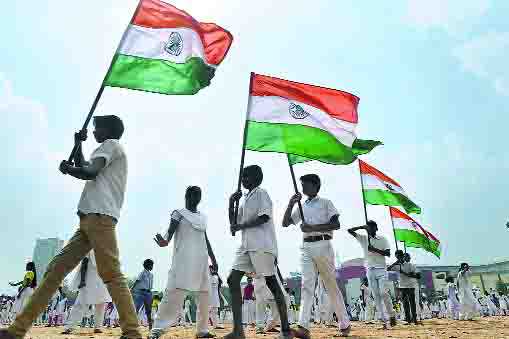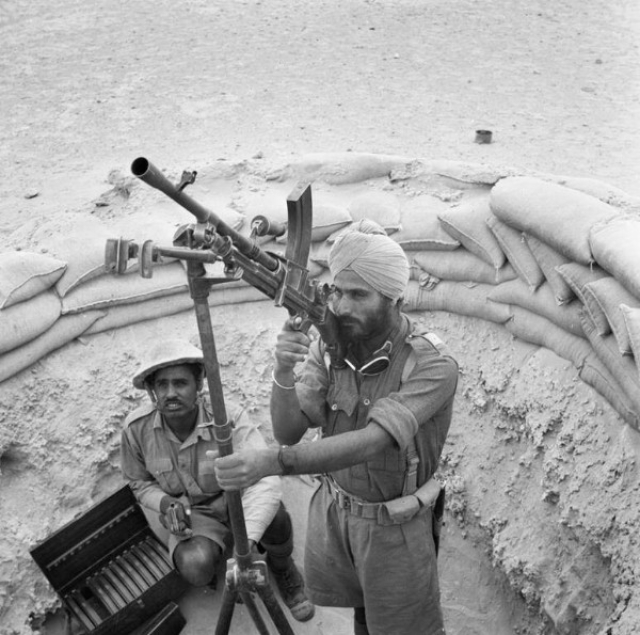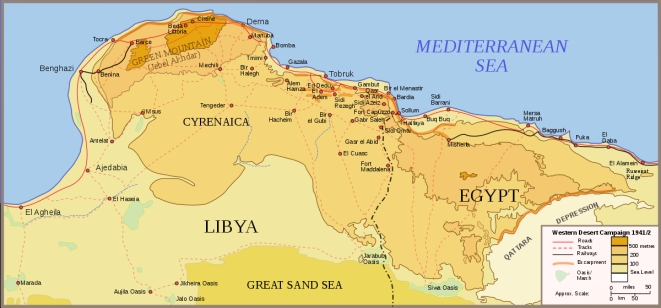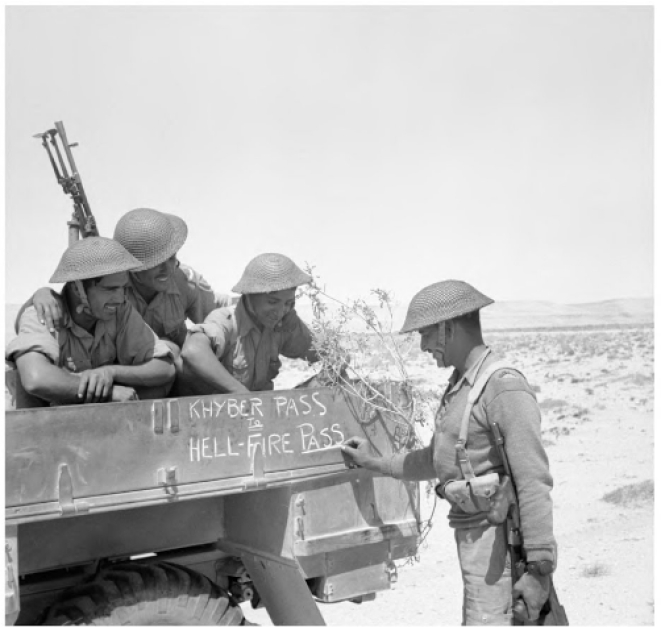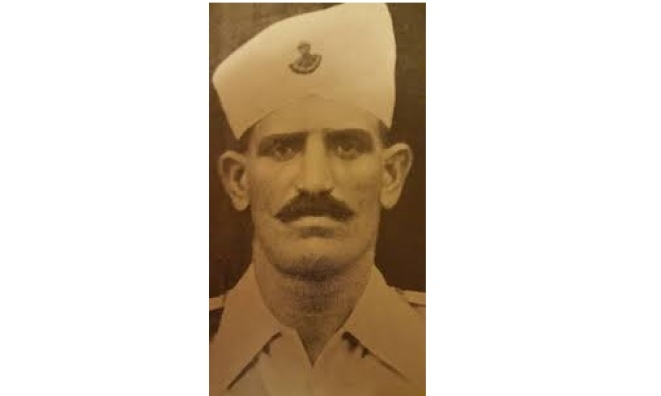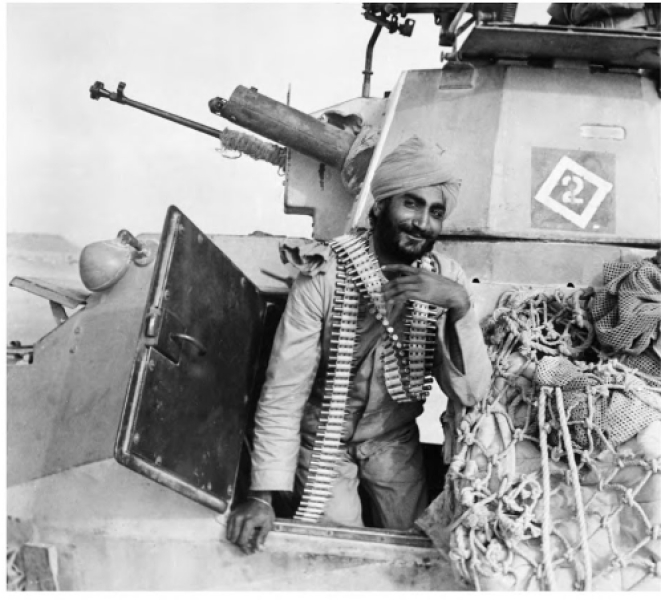Such intrepid heroism was to become the hallmark of the Fourth Indian Division as it stunned the enemy by its sheer fearlessness. Operation Crusader was the first victory, albeit a narrow one, by the British forces over the German ground forces in the Second World War, and more importantly the myth of invincibility of Rommel’s AfrikaKorps was forever shattered by the indomitable Indian sepoy. Rommel’s AfrikaKorps finally surrendered on 11 May 1943 to Lt Col C J Showers of the 1 Battalion, 2nd Gurkha Regiment, thus ending the war in North Africa for good. It’s work in North Africa completed the Red Eagle was then deployed to Syria. Later in 1944 they saw action in Italy where they fought at the famous battle of Monte Cassino along with the newly arrived American troops.
The Red Eagle saw its last major action of the Second World War when it was transferred to Greece which was then in the throes of a civil war. As the Germans withdrew from Greece, it became the battleground for the new war that was to engulf our world for the next 50 years – the Cold War. Soviet backed Leftist guerillas got embroiled in a bitter conflict with the American and British backed Greek government army. The Fourth Indian Division was involved in maintaining order during the bloody conflict which was in effect the first major conflict of the Cold War.
The Partition Of Punjab – The Fall From Grace Of The Red Eagle
By 1946 the Second World War was well and over but events in India had taken a precipitous turn. Imminent British withdrawal from India threatened to plunge the subcontinent into a whirlpool of violence. In particular Punjab, which had provided the bulk of recruits to the British war effort was now convulsed with a wave of violence as the newly returned soldiers who had not a few years ago fought shoulder to shoulder as brothers in arms now turned against each other in a frenzy of communal violence. The Fourth Indian Division was once again pressed into service, this time rechristened as the Punjab Boundary Force and tasked with stemming the communal violence in Punjab. However for the first time in its glorious history, the famous Red Eagle was to fail in its mission.
It’s by now legendary divisional motto of Jo Hukum – That Which is Ordered Shall be Accomplished – which it had lived up to throughout the deadliest conflict in human history was for the first, and the last time to fail. Where it had once fought insurmountable odds against the white man in Europe and in Africa, the Fourth Indian Division proved incapable of stemming the madness that had consumed its own people. The riots in Punjab, often led by disbanded army men who used tactics learned in the Army to organise genocidal violence, showed no sign of abating. As a result the Punjab Boundary Force was ignominiously disbanded soon after. With Partition, the Fourth Indian was divided, like many other British army divisions between India and Pakistan. Fifteen Battalions of the Fourth Indian Infantry Division were apportioned to India while 10 went to Pakistan where its remnants served with distinction.
Field Marshal Archibald Wavell, Commander-in-Chief of the Indian Army and later Viceroy of India summed up the achievement of the Red Eagle:
“…. The Fourth Indian Division will surely go down as one of the greatest fighting formations in military history: to be spoken of with such as The Tenth Legion, The Light Division of the Peninsular War, Napoleon’s Old Guard….A mere summary of its record is impressive: in five years it fought nine campaigns, traveled more than 15,000 miles, suffered over 25,000 casualties, captured upwards of 150,000 prisoners…. Its campaigns include the great victory of Sidi Barrani,…a gallant costly assault at Cassino against defences even more formidable than at Keren…the successful breaching of the Gothic Line….The Fourth Division has a claim on history even beyond its fighting capabilities…. and its commanders will always salute one of the greatest bands of fighting men who have ever served together in this troubled world of wars and warriors.” (Das:380)
The British Indian Army – A Conflicted Legacy Of Heroism And Valour
As a nation we are yet to come to terms with our men who went to war for the British. Nationalism all over the Third World were shaped to a large extent by their opposition to colonial ‘other’. The presence in this narrative of a large body of men who went to war for the supposed oppressor acts like a non-sequitur, disrupting the neatly drawn contours of the nationalist narrative. What does one make of these men who fought heroically in places far and wide, who carried proudly the name of the Indian nation where it was never known, but drew their pay from the hated colonial master? For the Indian national movement this posed a tricky question.
In the years immediately following Independence, this question was dealt with by shoving it under the carpet. In the utopian Nehruvian worldview, there were to be no more wars and hence the inconvenient question of accommodating the mercenary-warriors of yore was best left unattended. All of a sudden the millions of Indian soldiers who fought heroically in the two World Wars found themselves on the wrong side of history, their stories destined to be forgotten for forever. It took almost half a century, four full blown wars with our new neighbours, and efforts by academic movements such as the Subaltern Studies group and various oral history projects to once again bring to the centre the question of soldiers of the British Indian Army and their place in the national imagination. The debate is now slowly moving from the academic to the popular realm, as shown by the outcry over Dunkirk, and the sudden flux of historical works relating to the Indian contribution to the two World Wars.
The presence of Bose as a towering figure in Indian nationalistic pantheon further complicates the picture. Bose was a man who raised his own ‘Indian’ Army and joined hands with the Nazis against the British. The Indian National Army was promptly accommodated in the national narrative and accorded the status of heroes. However, the placement of a national hero on the same plane as a genocidal dictator sat uneasily, while leaving the question of the British Indian Army still unanswered. These unresolved conflicts deeply polarised the Indian psyche paving the way for ideological conflicts of the future.
These mercenaries of the Raj also complicate the Gandhian conception of Indians as a peace loving nation that was to form the bedrock of the Gandhi-Nehruvian ‘idea of India’. This was a conception that outraged the Hindu far right and perhaps led to the birth of a militant Hindu nationalism whose entire raison d’etre seemed to be to disprove the Gandhian pacifist conception of Indian history. Both the Gandhian notion and its reactionary far-right counter, in fact, arose because each completely chose to ignore the reality.
Perhaps, because, each was born out of elite politics removed from the ground realities, neither cared to factor in the ubiquitous peasant-soldier in its ideological calculations. That the British were able to raise the largest volunteer army ever raised in the history of mankind from India speaks volumes about the martial culture of the land. Soldiering has throughout Indian history been viewed as a right and honourable profession. The British soon realised that such a cultural predisposition to war, violence, and soldiering made Indians among the finest soldiers on earth, and used the knowledge to build their empire on the shoulders of the humble sepoy.
The Mahatma on the other hand, for all his love for the masses, failed to account for the millions of Indians who relied on violence for a living, and excelled at it. Professional soldiers and trained killers, these were men, who took their pay from the British, did what they were told to, and were proud of it. As the historian Raghu Karnad puts it – “the Indian army was a body of professional soldiers trained to uphold the illegal occupation of not just their own land but of others as well”.
The image of the disciplined professional soldier fighting in the deserts, jungles, trenches, and quietly accepting death over dishonor contrasted sharply with the kurta and corduroy clad men sitting in ornate chambers and plotting their sinister schemes to divide a nation in their lust for power. Today, we would know exactly which side we would root for in such a picture. In the turbulent 30s and 40s though, such an image only served to confound the neat narratives that all stakeholders in the political game were trying to construct. Since no one could make any sense of him, nor assign to him an easily recognisable label of hero or anti-hero, the soldier who went to war was thus relegated to a vacuum of the national imagination where he has been forced to remain till this day.
An acceptance of our men who went to war for the Raj could perhaps offer a solution to the bitter ideological battles we face today. We need to reconcile ourselves to the complex web of loyalties that define the nature of human interactions, and which are impossible to bracket into simple nationalistic binaries. Inherent to such reconciliation is the idea that the sepoy could draw his pay from the white man and yet have his heart beat for an independent Indian nation. The recognition that we as a people have a history of and a reputation for combat that is matched by few others in the world could ironically be the way forward to peace. These were our men, and these are our histories. It is time we own up to them.














